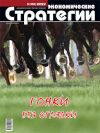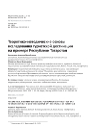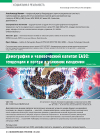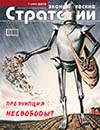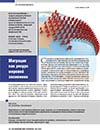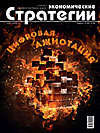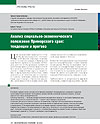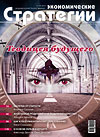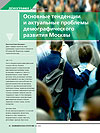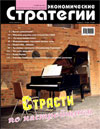Modeling Depopulation Trends in the Community of Countries with Different Economic Development Levels
DOI: https://doi.org/10.33917/es-3.183.2022.26-37
In this paper, an attempt is made to develop a mathematical model of population growth, based on socio-economic factors of the development of the countries’ community, as well as population migration. The author presents intermediate results of his review where he studies economic community, characterized by a very uneven development of regions. Mathematical model is proposed in which a conditional “center” and “periphery” (“global city” and “world village”) are distinguished. From the analysis of the existing socio-economic conditions of development it follows that “periphery” traditionally acts as a demographic donor for the “center”. Examples of such systems include, in particular, relations of the EU-Baltic republics, the EU-Ukraine, and Russia–EAEU countries. As an explanatory principle, it is proposed to use the concept of “institutional trap”. From the mathematical model point of view, this means rigidly fixed coefficients of connection between the system elements implementing one-way connection (toward the “center”). Possible mechanisms, influencing the dynamics of the system through adopting appropriate managerial decisions, are discussed. Obtained results prove the importance of adequate mathematical models for optimizing the strategic management of society.
Источники:
1. Ukaz Prezidenta RF ot 1 dekabrya 2016 g. N 642 “O Strategii nauchno-tekhnologicheskogo razvitiya Rossiiskoi Federatsii” [Executive Order of the President of the Russian Federation dated December 1, 2016 No. 642 “On the Strategy for Scientific and Technological Development of the Russian Federation”]. Ofitsial’nyi sait Prezidenta RF, available at: http://www.kremlin.ru/acts/bank/41449.
2. Complex Systems and Society — Modeling and Simulation. Springer, 2013, available at: https://link.springer.com/book/10.1007/978-1-4614-7242-1.
3. Solozhentsev E.D. Tsifrovoe upravlenie gosudarstvom i ekonomikoi [Digital Management of the State and Economy]. Upravlenie i planirovanie v ekonomike, 2018, no 1(17), pp. 136–153.
4. Federal’nyi zakon ot 28 iyunya 2014 g. N 172-FZ “O strategicheskom planirovanii v Rossiiskoi Federatsii” [Federal Law of June 28, 2014 No. 172-FZ “On Strategic Planning in the Russian Federation”]. Ofitsial’nyi sait Prezidenta RF, available at: http://www.kremlin.ru/acts/bank/38630.
5. Eberlin M. Foresight: How the Chemistry of Life Reveals Planning and Purpose. Discovery Institute, 2019.
6. Gaponenko N.V. Forsait. Teoriya. Metodologiya. Opyt [Foresight. Theory. Methodology. Experience]. Monografiya. Moscow, Yuniti — Danab, 2008, 239 p.
7. Unido Technology Foresight Manual. United Nations Industrial Development Organization, Vienna, 2005, vol. 1, p. 8.
8. Pereslegin S.B. Budushchee kak proekt: krizis futurologii [The Future as a Project: Crisis of Futurology]. Intellekt, voobrazhenie, intuitsiya: razmyshleniya o gorizontakh soznaniya (metafizicheskii i psikhologicheskii opyt). Saint-Petersburg, 2001, no 10.


